Fibonacci dances with 999899.99 mathematicians
doe-radi-formula
appearance range-slider-skin version 0.04
| radius | |

|
|
| analytical numerical evaluation |

|
| graphical interpretation |
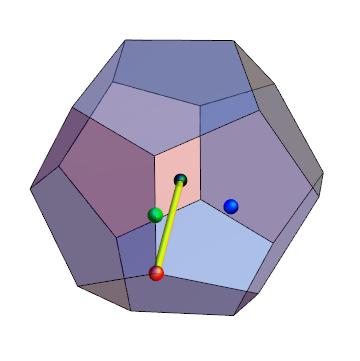
|
all results for comparing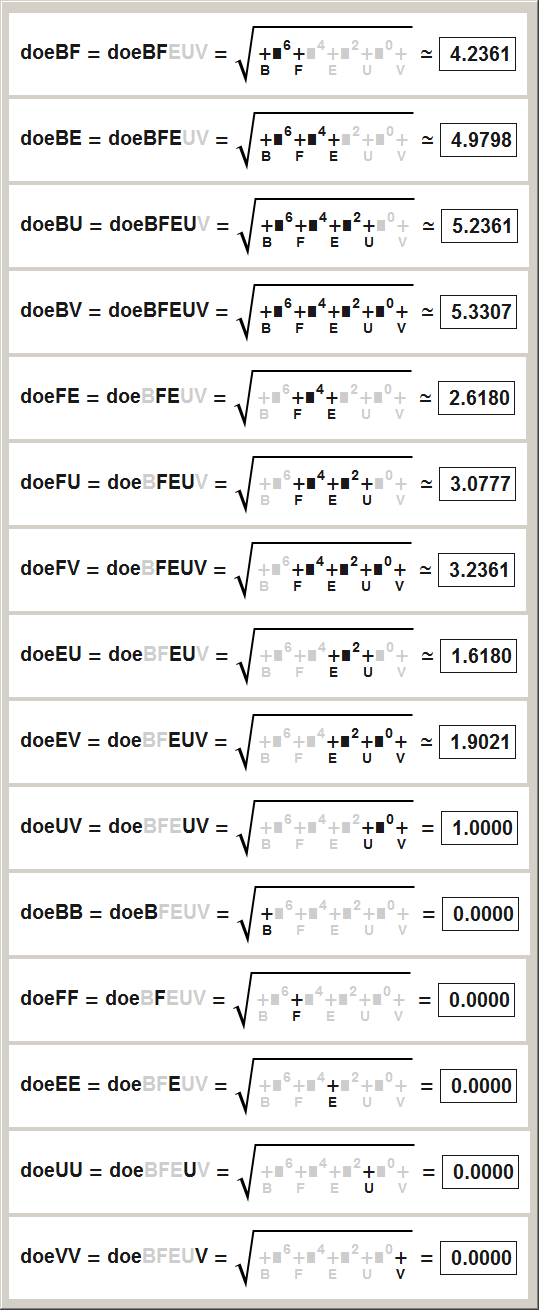
|
|
|---|---|

doe radi: just another tryworse or better? 
|
|
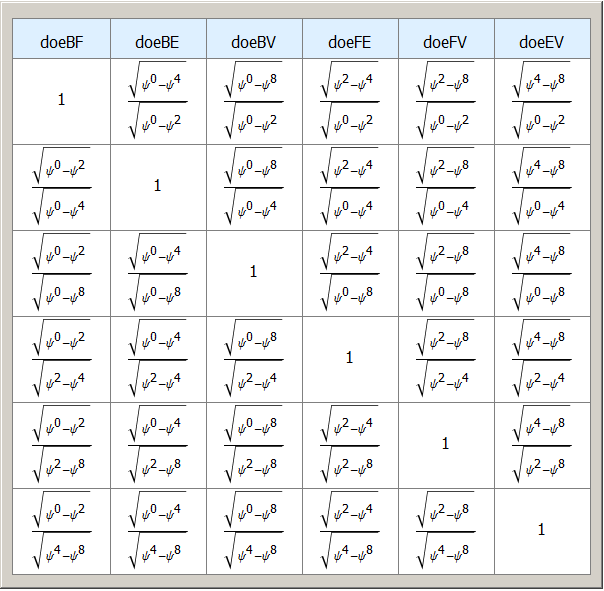
|
|
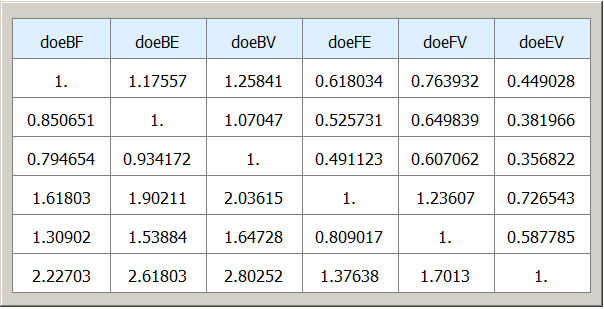
|
|

appearance sky-scraper-skin version 0.01
Sky-scraper-skin effects range-selection by underlining. A good and simple version suitable for explanations at school, since underlining can be repeated.
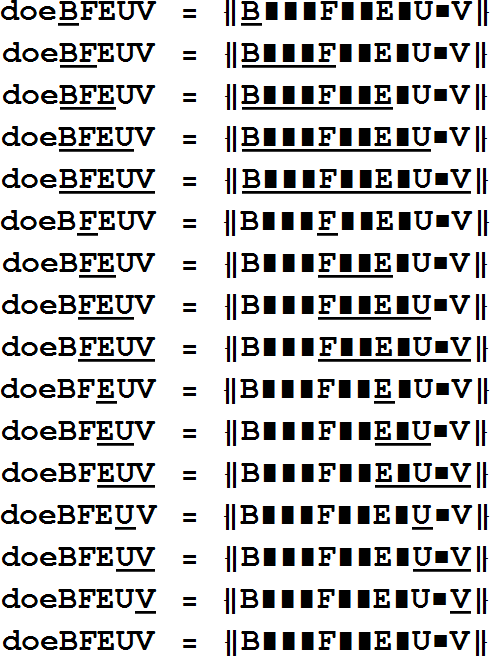
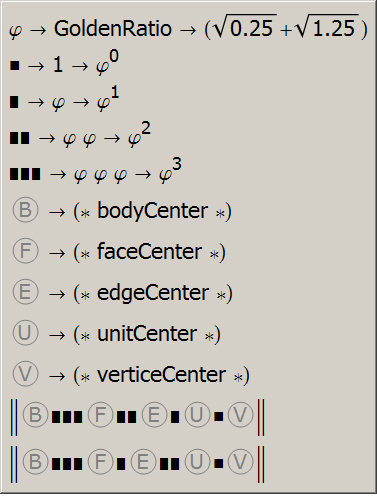
appearance baseform version 0.01
Representing numbers based at GoldenRatio² allows a fairly short notation for dodecahedron radi and icosahedron radi.
In mathematics the following notation form is commonly used for numbers with a different base:
For example "5" written in binary base gives 1012 = 5. This means our "number base", has changed from default base to binary base.
Using now the baseform with base GoldenRatio², denoted as φ², gives 101φ² = φ4 + 1. For the following two tables ...
"number base" → "GoldenRatio²" → φ² = (3+√5)/2 ≈ 2.618…
dodecahedron radi based GoldenRatio²
"dodecahedron radius from body center to face center" → doeBF = √1000φ²
"dodecahedron radius from body center to edge center" → doeBE = √1100φ²
"dodecahedron radius from body center to unit center" → doeBU = √1110φ²
"dodecahedron radius from body center to vertex center" → doeBV = √1111φ²
"dodecahedron radius from face center to edge center" → doeFE = √0100φ²
"dodecahedron radius from face center to unit center" → doeFU = √0110φ²
"dodecahedron radius from face center to vertex center" → doeFV = √0111φ²
"dodecahedron radius from edge center to unit center" → doeEU = √0010φ²
"dodecahedron radius from edge center to vertex center" → doeEV = √0011φ²
"dodecahedron radius from unit center to vertex center" → doeUV = √0001φ²
icosahedron radi based GoldenRatio²
"icosahedron radius from body center to face center" → ikeBF = √1000φ²
"icosahedron radius from body center to edge center" → ikeBE = √1010φ²
"icosahedron radius from body center to unit center" → ikeBU = √1110φ²
"icosahedron radius from body center to vertex center" → ikeBV = √1111φ²
"icosahedron radius from face center to edge center" → ikeFE = √0010φ²
"icosahedron radius from face center to unit center" → ikeFU = √0110φ²
"icosahedron radius from face center to vertex center" → ikeFV = √0111φ²
"icosahedron radius from edge center to unit center" → ikeEU = √0100φ²
"icosahedron radius from edge center to vertex center" → ikeEV = √0101φ²
"icosahedron radius from unit center to vertex center" → ikeUV = √0001φ²